Using the right kind of soil for your spider plant is important to keep it happy and healthy. While they’re not too fussy, they do prefer a nutrient-rich mix that drains well.
In this post, I’m going to explain all you need to know about spider plant soil. I’ll also share my simple recipe and step-by-step instructions for making your own mix.
Plus you’ll learn how to choose the best type to use, the properties that make it suitable, and how to properly store the leftovers for later.
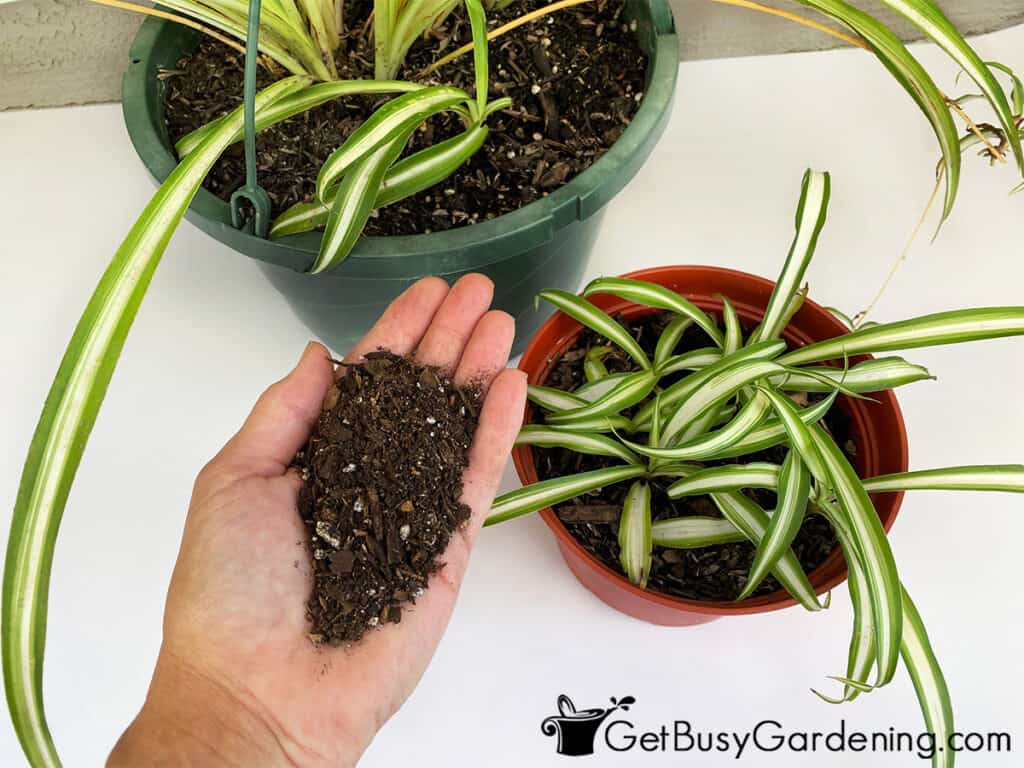
The Best Soil For Spider Plants
The best soil for spider plants is a loamy, nutrient-rich, lightweight, quick-draining medium that provides good aeration and has a neutral to mildly acidic pH level.
I recommend buying a high-quality general purpose potting mix, or using my simple recipe below to make your own.
How To Choose The Right Soil
To make sure that the soil you choose is perfect for your spider plant (also known as Chlorophytum comosum, or airplane plants), check the packaging for the following properties:
- Well-draining – The label should say something like “fast draining” or “well draining”. This will allow excess water to flow readily from the pot, and prevent the medium from becoming overly wet or soggy.
- Loamy and nutrient-rich – To keep your plant healthy and vibrant, look for rich, fertile soil. Avoid mixes that contain chemical fertilizers, and look for one made from natural or organic ingredients instead.
Related Post: How To Care For A Spider Plant (Chlorophytum comosum)
- Moisture retentive – Although your Chlorophytum comosum won’t do well in very wet soil, it doesn’t like to be completely dry out either. Choose a mix containing ingredients that naturally retain moisture, such as peat moss and pine bark.
- Porous mix – Spider plants love porous soil because it is loose and aerated. This means that water will pass through it easily, preventing it from retaining too much, and keeping the moisture level just right.
- Mildly acidic – Airplane plants prefer neutral to mildly acidic mix ranging between 6.1 – 7.5 on a probe meter. If it is too alkaline the tips of the leaves may turn brown and begin to die back. You can add acidic fertilizer granules if it’s too alkaline, or garden lime to neutralize it.
Related Post: Why Do Spider Plant Tips Turn Brown & How To Fix It
Making DIY Spider Plant Soil Mix
You could use a general purpose potting medium for your spider plant, or try making your own. It’s easy to do and gives you full control over the ingredients. Below is my recipe and tips for mixing it.
Recipe
- 2 parts peat moss
- 1 part ¼” pine bark
- ½ part coarse sand
- ¼ part perlite or pumice
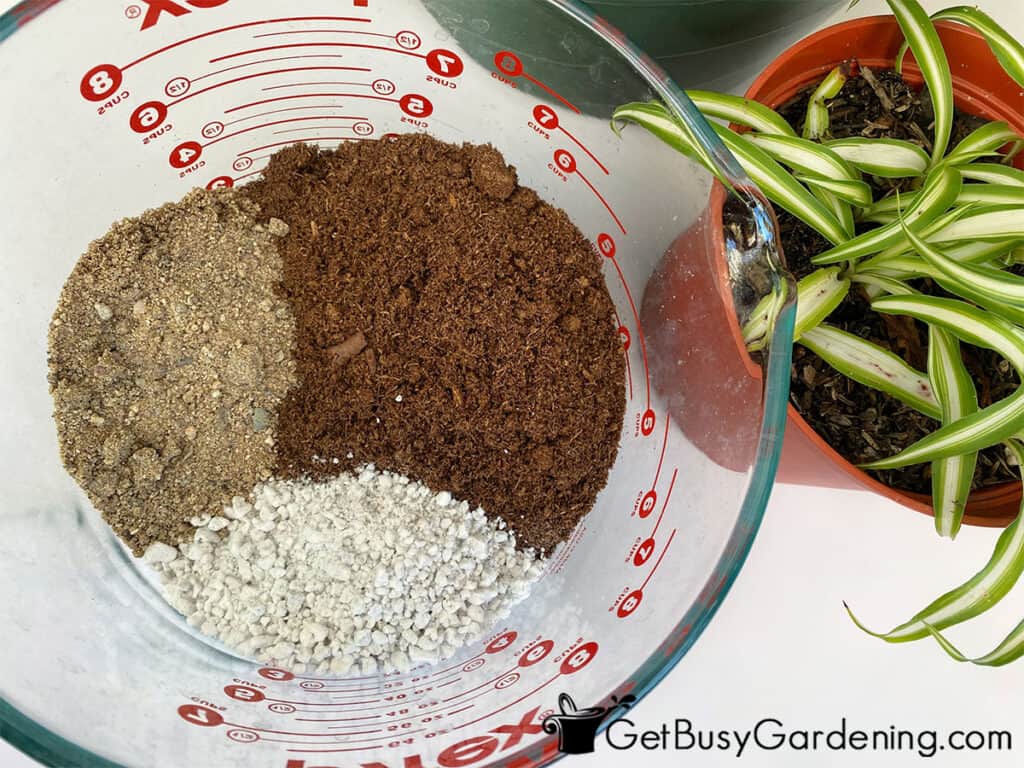
Supplies Needed
- Measuring container
- Hand trowel
- Dust mask
- pH probe
- Table-top potting tray or bucket for mixing
Ingredients
You only need 4 ingredients to make your own homemade spider plant soil mix using my recipe. Below I’ll tell you the purpose of each one, and give you substitutions incase you can’t find them.
- Peat moss – Improves water retention, aeration, and drainage while also providing nutrients. You can use coco coir instead, if you prefer. In that case, add some acidic granules.
- Pine bark – Provides additional nutrients as it breaks down, prevents compaction, and helps to improve drainage.
- Coarse sand – Helps to ensure that the mix drains quickly. You can substitute turface or poultry grit. Some people like to use crushed granite or aquarium rock instead.
- Perlite – Adds drainage and aeration and also prevents compaction. If you can’t find it where you live, then you can use pumice instead, which is very similar.
Tips For Mixing Your Homemade Spider Plant Soil
Moisten the peat moss if it’s dry, then pour all of the ingredients into a table-top potting tray or bucket.
Stir everything together with a hand trowel or shovel. Make sure all of the ingredients are thoroughly mixed together before using.
Storing The Leftovers
You can use your DIY spider plant potting soil right away or store the leftovers for later. To keep it safe, use a 5-gallon bucket with a tight-fitting lid. This creates an airtight environment that will protect it from bugs and pathogens.
Store the bucket in a cool, dry location and label it clearly, as it can be very difficult to tell homemade mediums apart once they’re mixed.
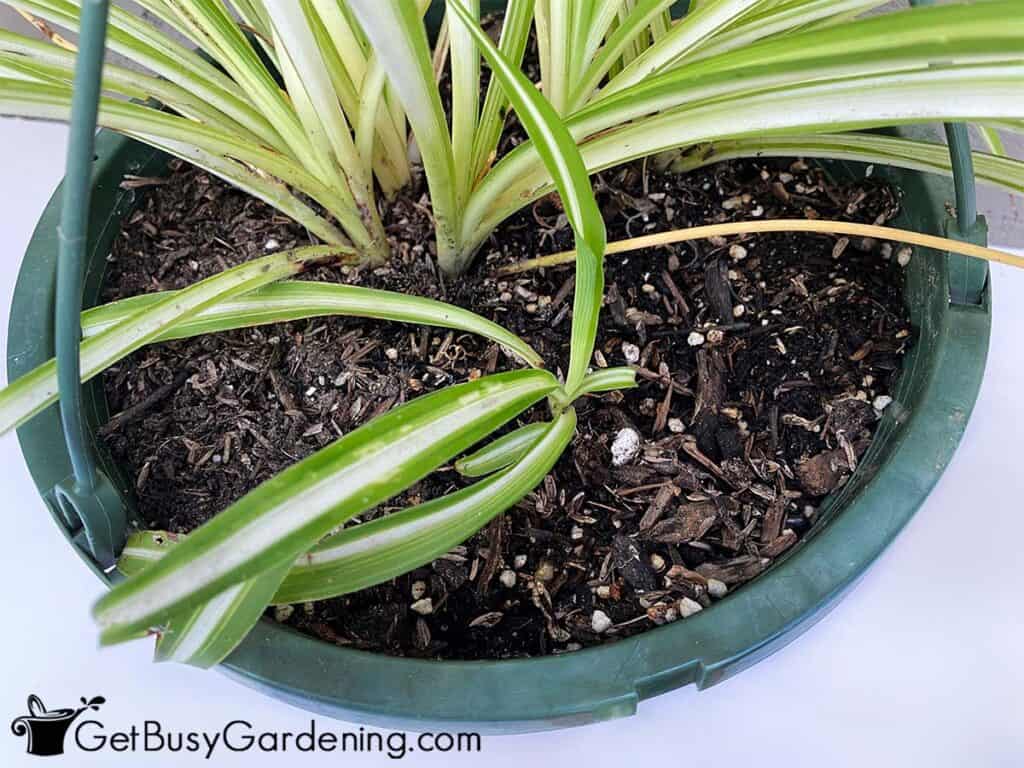
FAQs
While you could use cactus mix for your spider plant, I don’t recommend it. Cactus soil is gritty and doesn’t retain moisture well, so you would need to water a lot more often. It also lacks the nutrient-rich materials that Chlorophytum comosum needs.
Yes, African violet soil is a good choice for spider plants. The texture and pH level are ideal, plus it provides the perfect balance of nutrients.
Yes, you can use regular potting soil for your spider plant. Just make sure to buy a high quality brand that’s made for indoor plants, otherwise it may be too heavy.
If you want to learn all there is to know about maintaining healthy indoor plants, then you need my Houseplant Care eBook. It will show you everything you need to know about how to keep every plant in your home thriving. Download your copy now!
More About Spider Plants
- How To Water Spider Plants
- Collecting and Sowing Spider Plant Seeds
- Spider Plant Propagation In 5 Easy Steps
More About Potting Soils
- 7 Easy DIY Potting Soil Recipes To Mix Your Own
- How To Make Your Own Succulent Soil
- How To Choose The Best Snake Plant Soil (With Recipe!)
- How To Choose The Best Money Tree Soil (With Recipe!)
Share your tips for the best spider plant soil or your favorite recipe in the comments section below.
Printable Step By Step Instructions
How To Make Spider Plant Potting Soil
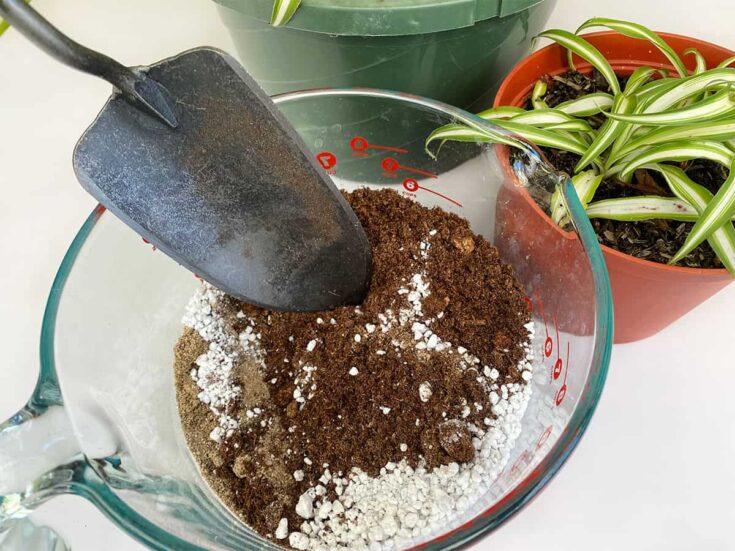
Learn to make your own spider plant soil with my detailed instructions. You’ll discover the tools and ingredients you’ll need, how to measure and mix them, and how to safely store the leftovers for future use.
Tools
Instructions
- Pre-moisten - If the peat moss is dry, moisten it until it is slightly damp to the touch. Don’t overdo it - it should not be soggy or dripping with water.
- Measure the ingredients - Measure the peat moss, pine bark, coarse sand, and perlite using a container of your choice. This could be a scoop, measuring cup, bucket, or large spoon. For consistency, be sure to use the same container for each ingredient.
- Mix thoroughly - Combine all of the ingredients in a bucket or potting tray and stir with a hand trowel or shovel. Make sure that all the ingredients are mixed thoroughly.
- Use or store - Use as much of your homemade mix as you need right away, then transfer any leftovers to a bucket or container with an airtight lid. Label it clearly then store it in a cool, dry location.
Notes
- I recommend wearing a dust mask when mixing your own potting soil to avoid breathing in any harmful particles.
- Be sure to pre-moisten the peat moss before measuring your parts, as it tends to expand when you add water.
- It’s very important to store any leftover soil in a container with an airtight lid, otherwise bugs and pathogens can get in.
- Don’t forget to label the container clearly, as it can be hard to tell homemade potting mixes apart.
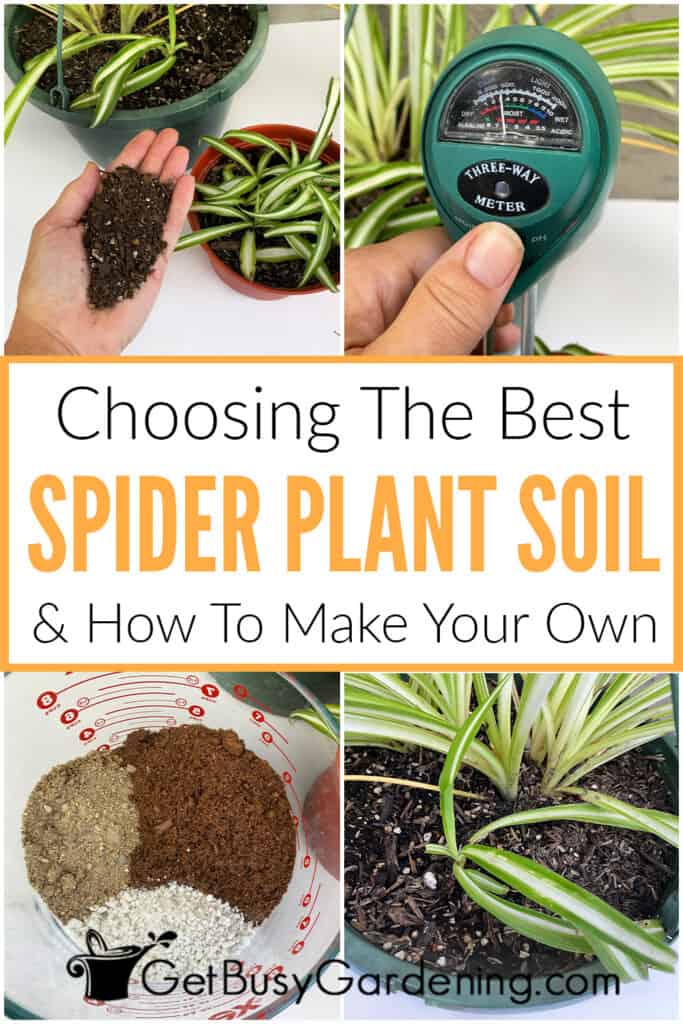
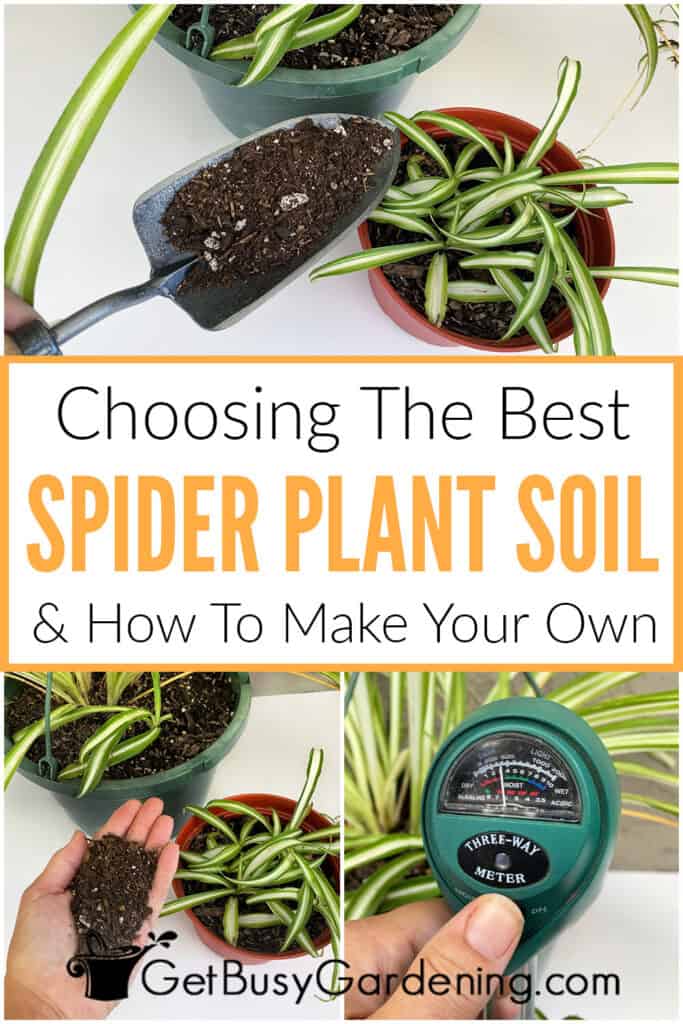
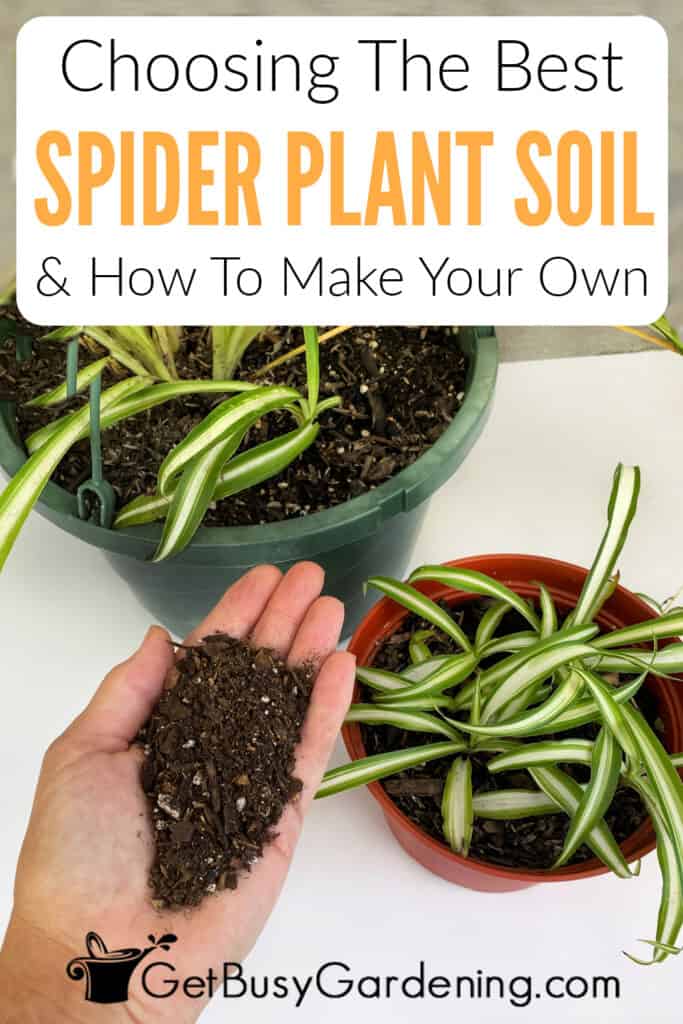

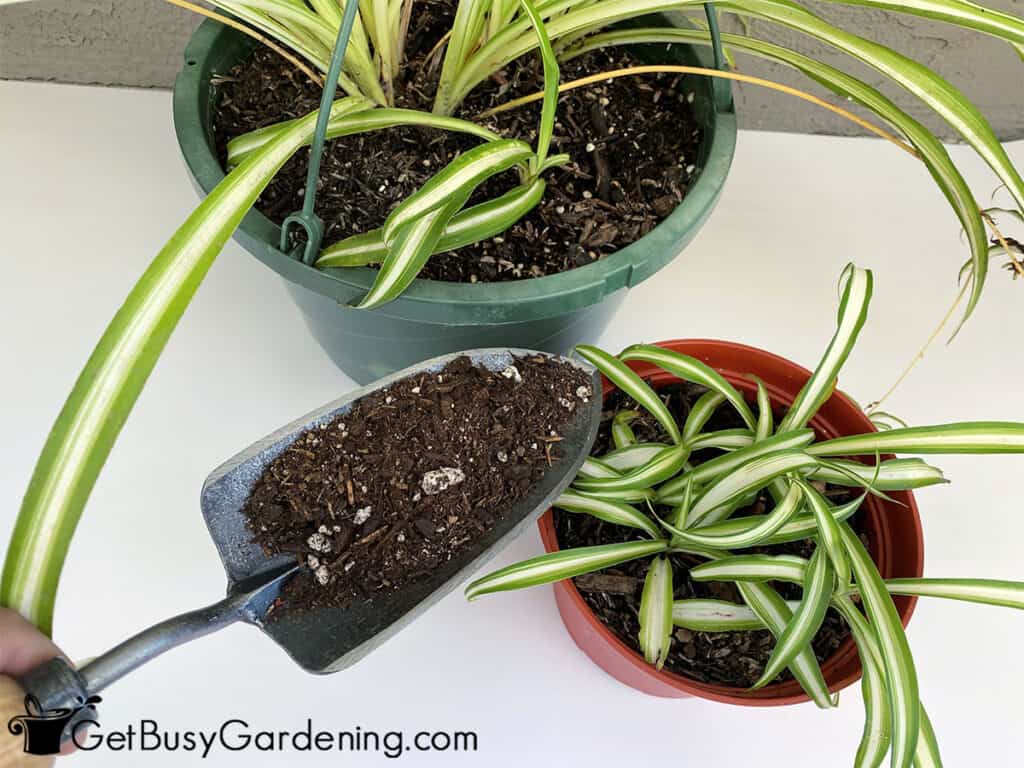
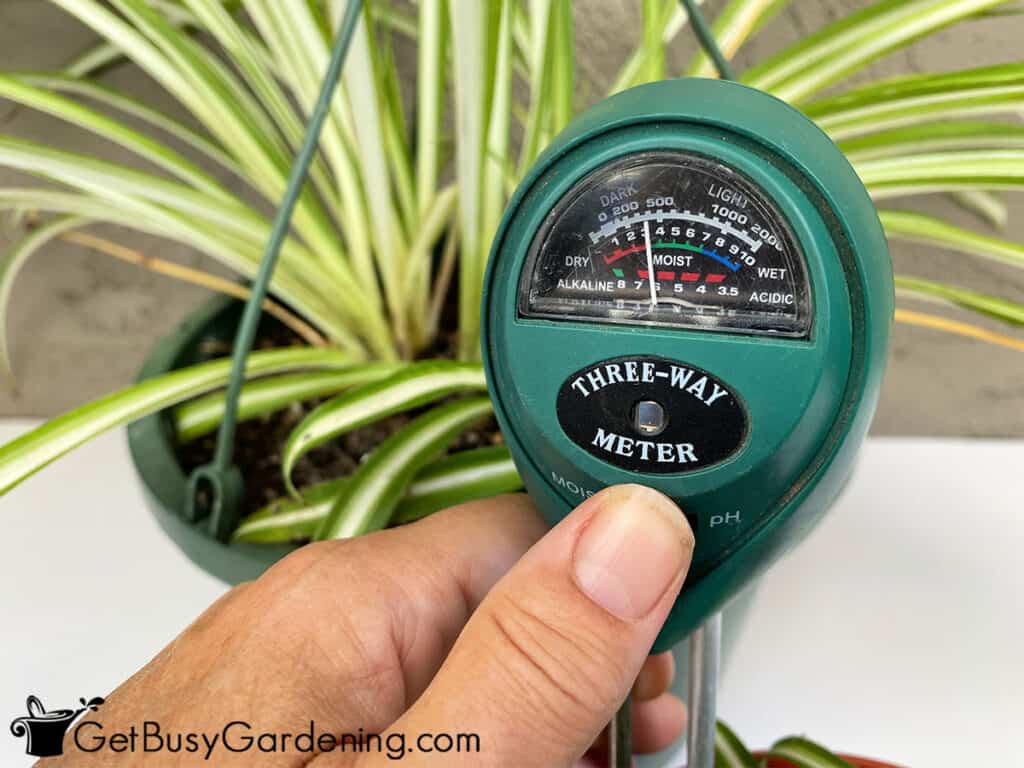
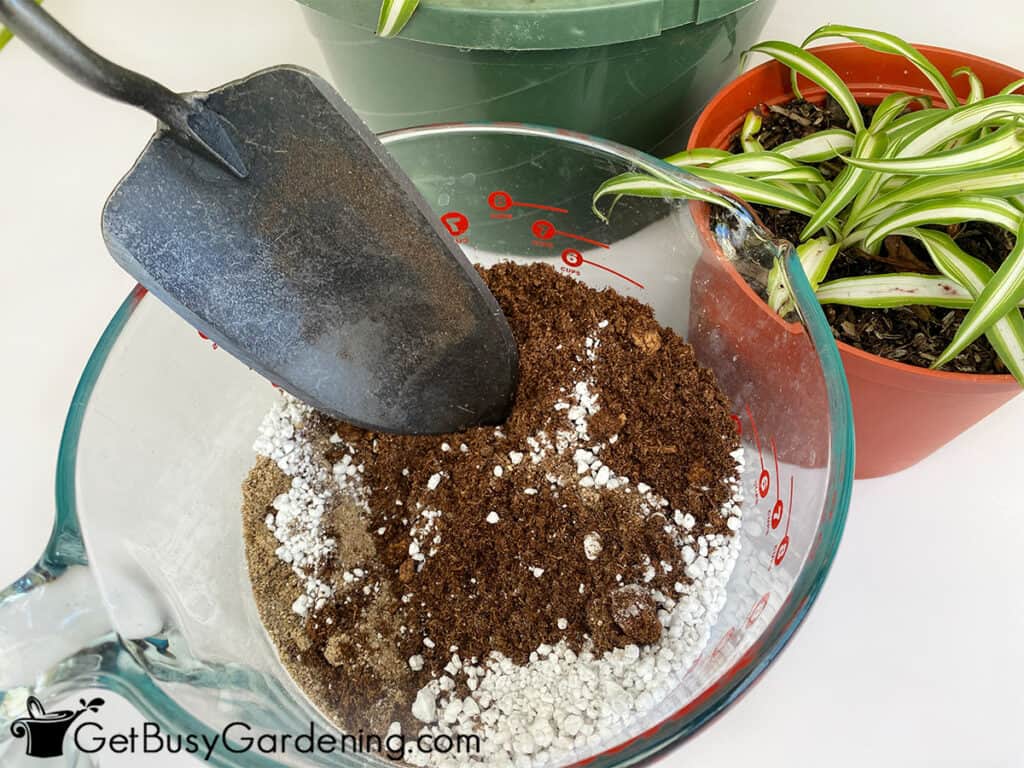

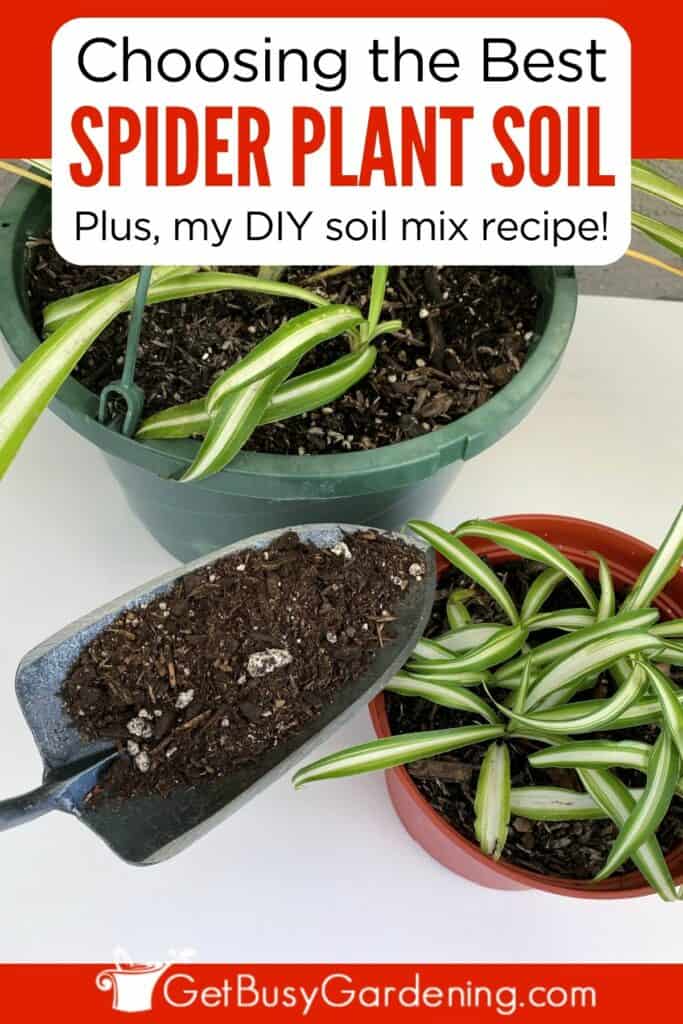

Leave a Reply